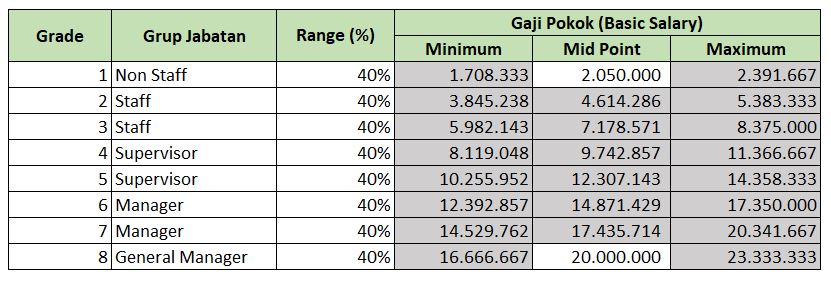Creating graphical representations of data is a vital resource in today’s digital world. Microsoft Excel provides us with a user-friendly interface that enables us to plot data in multiple formats; one of these formats is logarithmic visualization.
Logarithmic Visualization
Logarithmic visualizations represent data in a logarithmic scale. A logarithmic scale alters the relationship between numbers by incorporating logarithms. This means that the scale is not progressive, but instead grows at an exponential rate, allowing us to compare data points with greater accuracy.
A logarithmic graph may appear peculiar to the uninitiated eye; the labels on the x-axis and y-axis do not increment linearly in logarithmic graphs. Firstly, logarithmic scale compresses data dynamically; it stretches the data at lower levels and compresses it at higher levels to make it legible. Secondly, the logarithmic scale is only applicable when we deal with data that spans across an enormous range; it is typically used to represent huge values that differ over multiple orders of magnitude.
Below is a step-by-step tutorial on how to create a logarithmic chart in Microsoft Excel.
Tutorial
Step 1: Display the Raw Data In a Table
The first step is to have the raw data at hand. Enter the data in a table on an Excel spreadsheet.
Step 2: Create a Chart in Microsoft Excel
To create the logarithmic chart, please follow these steps:
- Select the data to be used in the chart
- Select the “Insert” tab and choose the “Charts” category
- Select the desired chart type – in this case, we need to choose “Scatter Chart”
- After selecting the scatter chart, click “Next”, and a preview of the chart will be displayed. Here, we can customize the chart and its layout
- Select “Finish”, and the graph will be created
Below is an example of how a logarithmic chart looks in Excel; this chart represents the number of products, in millions, sold by a company on a logarithmic scale on the x-axis and the years on the y-axis.
FAQ
What is a Logarithmic Scale, and Why Do We Use It for Data Visualization?
A logarithmic scale is a method of scaling data where the values on the scale increase by a magnitude of ten, each step of the way. Instead of using equally spaced intervals along the scale, logarithmic scale compresses the data dynamically, stretching the data at lower levels and compressing it at higher levels to make it legible. We use it for data visualization when the data points cover a vast range of values that are critical to understanding relationships.
What’s the Difference Between a Linear Scale and a Logarithmic Scale?
While a linear scale grows equally, logarithmic scales grow exponentially. A linear scale has values on the axis that are equally spaced and increases in a constant pattern, which means the distance between two points on the axis remains constant. On the other hand, logarithmic scales increase logarithmically, meaning the values on the axis are not equally spaced. The larger the value is, the more space it needs on the axis as it grows exponentially.
Bonus: YouTube Tutorial
For those who prefer a more visual approach, the video below explains how to create a logarithmic chart in Excel, step-by-step:
Struktur Skala Upah Metode Trend
Struktur Skala upah digunakan untuk menentukan berapa penghasilan atau upah yang diterima oleh karyawan dalam sebuah perusahaan. Skala upah didasarkan pada beberapa faktor, seperti tingkat pendidikan, pekerjaan, pengalaman kerja, dan lain sebagainya.
Dalam menggunakan metode trend, dapat dihitung naik atau turunnya upah bulanan karyawan dengan menggunakan rumus regresi linier. Rumus tersebut adalah sebagai berikut:
y = a + bx
Dimana:
- y = Upah bulanan karyawan
- a = Intercept atau besar upah bulanan ketika pengalaman kerja = 0
- b = Koefisien regresi atau besarnya kenaikan upah bulanan untuk tiap pengalaman kerja
- x = Pengalaman kerja dalam tahun
Cara Membuat Struktur Skala Upah Metode Trend Dalam Excel
Berikut ini merupakan contoh membuat struktur skala upah metode trend dalam Excel:
- Siapkan data dengan beberapa kolom, seperti Nama karyawan, Level, Gaji Pokok, Lanjutan, Pendidikan, dan Pengalaman Kerja.
- Buat custom field – pada kolom di sebelah kanan pengalaman kerja, buat kolom yang bernama “Trend”. Selanjutnya, masukkan rumus “y=a+bx” ke dalam sel pada kolom “Trend”. Rumus tersebut akan menghitung nilai upah karyawan pada setiap level.
- Buat grafik – ketika rumus sudah dijumlahkan, pilih seluruh kolom yang memiliki data yang akan digunakan, lalu klik “insert”, dan pilih grafik yang diinginkan. Untuk mempermudah, pilih grafik scatter dan Smooth line.
Jadi, itulah cara membuat struktur skala upah metode trend dalam Excel. Dengan mengikuti tutorial ini, Anda dapat membuat grafik visual yang mudah dipahami dan dapat digunakan sebagai acuan untuk perhitungan gaji karyawan.


